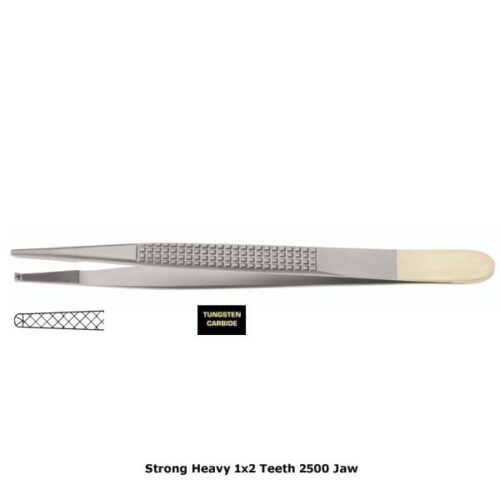The Essential Role of Bonnie Forceps in Surgical Practice
The Essential Role of Bonnie Forceps in Surgical Practice
Blog Article
Bonnie forceps are specialized surgical instruments designed for grasping and holding tough tissues during medical procedures. Known for their strength and durability, these bonnie forceps are widely used in general surgery, orthopedic surgery, and other procedures where firm handling of dense tissues or materials is required. Their robust design makes them a reliable tool in the hands of medical professionals.

Features and Design
Bonnie forceps are characterized by their toothed jaw design, which provides a secure grip on tough tissues without causing excessive trauma. Typically made from high-quality stainless steel, these forceps are resistant to corrosion and wear, making them suitable for repeated sterilization. The ergonomic design of the handles ensures comfort and control during use, while the toothed tips allow surgeons to grasp tissues firmly, even in challenging scenarios.
Applications in Surgical Procedures
Bonnie forceps are most commonly used in procedures involving dense or fibrous tissues, such as fascia or muscle. In orthopedic surgeries, they assist in gripping tough tissues during bone fixation or joint reconstruction. These forceps are also utilized in general surgical procedures, where they help in securely holding tissues for suturing, retraction, or dissection. Their reliable grip and precision make them a preferred choice for handling robust anatomical structures.
Benefits of Using Bonnie Forceps
One of the key advantages of Bonnie forceps is their ability to hold dense tissues securely without slipping. The toothed design ensures a firm grip, minimizing the risk of accidental tissue damage or slippage during critical procedures. Their durable construction ensures consistent performance over time, even with frequent use. Additionally, the ergonomic handles reduce hand fatigue, allowing surgeons to work efficiently during extended procedures.
Selecting the Right Bonnie Forceps
Choosing the right Bonnie forceps depends on the specific needs of the procedure. Variations in size, tip design, and handle configuration are available to cater to different surgical applications. It is essential to select forceps that provide a balance between strength and precision, ensuring optimal performance in the operating room. High-quality Bonnie forceps are often CE-marked and compliant with medical standards, providing assurance of their safety and effectiveness.
Maintenance and Care
Proper maintenance of Bonnie forceps is crucial for preserving their functionality and longevity. After each use, they should be cleaned thoroughly to remove any biological debris and sterilized to prevent contamination. Regular inspections for wear, particularly on the toothed tips, are necessary to ensure they remain sharp and effective. Storing them in a secure, dry environment further protects them from damage and corrosion.
Conclusion
Bonnie forceps are indispensable tools in surgical practice, offering strength, precision, and reliability for handling tough tissues. Their ergonomic design and robust construction make them a trusted instrument for surgeons across various specialties. By selecting high-quality Bonnie forceps and adhering to proper maintenance protocols, medical professionals can ensure optimal performance and safety, ultimately enhancing patient outcomes. Report this page